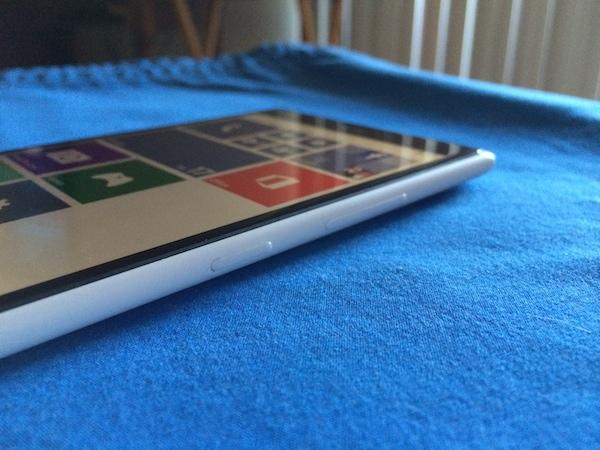
Remember when activating your phone's display was as easy as just flipping it open? Those were the good-old days, I'm afraid. Now? Now we've got phones that are all touchscreen, with a few buttons along the sides (or top) for good measure. I know that sounds boring, but at least we know that some manufacturers out there are thinking out of the box when it comes to button placement.
Last year, LG unveiled the G2, and along with it buttons that didn't fit into slots on the side of the smartphone, but instead sat firmly in place on the back cover. LG's draw here is that you, as a common smartphone user, probably rely on your index finger quite a bit (probably not more than your thumbs, though), so why not make it as comfortable as possible for someone who picks up their newest flagship device?
With a display that measures just over 5-inches, the fact that LG has the courtesy not to stick buttons on the top of the phone is really generous. It's one thing to offer a device with a big display, but an entirely different thing to ask users to have to pull a muscle to reach a button. More than that, though, it should just be comfortable to reach any button on our favorite mobile devices. We shouldn't have to worry about holding it awkwardly, which could lead to us dropping it.
It should be easy. Unfortunately, it very rarely is.
Yes, we can get used to it, and that's great for folks who want to do that. And on some devices out there, there are even ways around activating your handset without having to press the Power button. With an iPhone, you can just press the Home button right below the display. On Nokia-branded Windows Phone-based handsets running the right software, just a quick double-tap on the display will get you going. LG's got their own Knock On feature, and Motorola will let you talk to your device to activate the screen. There are options, but it's time that we really pressure some change in our design language.
The Power button on HTC's One M7 was maddening. I went through three different handsets, and none of them offered a Power button that made me happy to activate at any given moment. It's certainly better on the new One M8, but it's still not perfect. It's a combination of placement and design, with the button sitting just a little bit too close to the edge of the handset. But, it's also just the fact that it's a big-ish phone, and also ridiculously slippery, so adjusting the grip to get to the Power button can lead to some unfortunate results.
Yes. I dropped the phone on me once (or twice). I'm not the only one!
Even reaching the iPhone's Power button, with its small 4-inch display, means stretching the hand way more than I'd like, especially if I have to put my thumb on the Home button to get past the lock screen. And I'd keep hitting the Home button to activate the screen, but with so many presses I'm genuinely afraid it's just going to stop working eventually. I've had it happen in the past, and I never want to be in that nightmarish situation again.
LG had an easy fix, and even Nokia has had a fix from day one on their Windows Phone-based devices. (This is one of the strengths of Microsoft's design cues, as HTC, Samsung and others have the same button layout on their devices.) With LG the Power button is on the back of the device, easily accessible from your index finger. And then, on Windows Phone handsets, the Power button is on the right side of the phone, usually just above the physical camera shutter button.
Everyone needs to copy this. I'm not even kidding. This is a design decision that I want every other single smartphone manufacturer out there to copy. I want them to design their device as they see fit, with or without the big display, and then put it into people's hands. People with big hands, little hands, and wherever in between, to judge where the best possible location for the Power button on the side of the device should be. I don't even care which side it's on (the right, please), but place it in a comfortable location for a finger to easily activate.
There are rumors out there that suggest Apple's considering this type of change for their 4.7-inch iPhone coming down the pipe, but there's no reason I'm going to get excited about this. Not yet. It would be amazing, but I'm not going to hold my breath.
How do you feel about the location of your device's Power button? Is it a pain for you to reach, and have you found a way around it? Do you think the Power button should be on the side of your phone? Let me know!